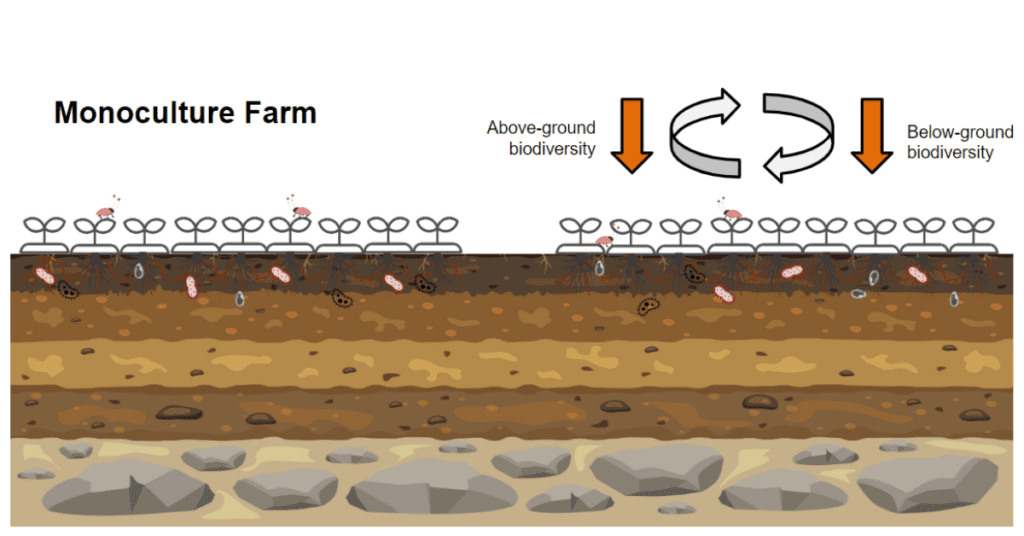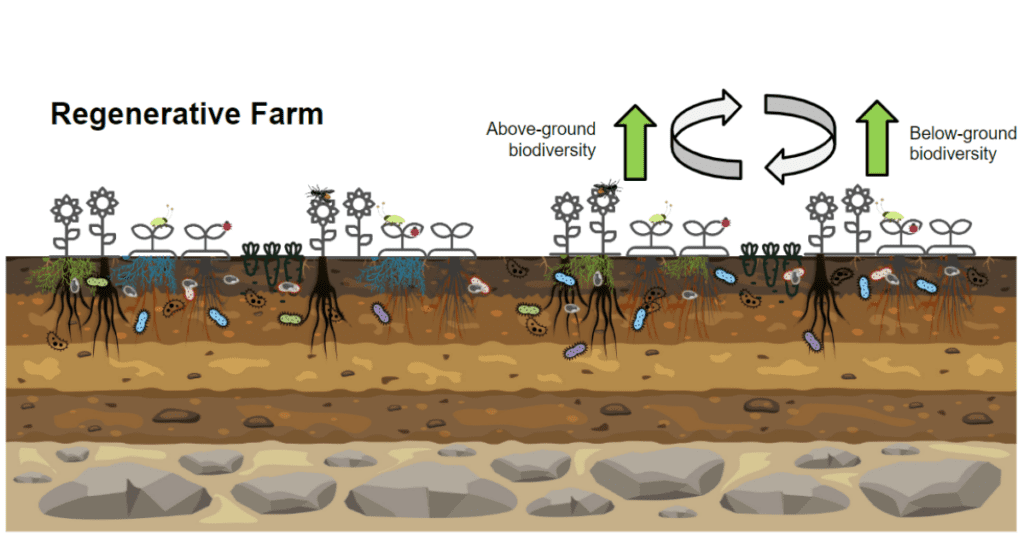Biodiversity
Above and belowground environments are interconnected by ecological food webs


From Guys Plamann’s talk at the 2023 Acres U.S.A. Healthy Soil Summit:
Ecologically speaking, there are millions of routes organisms can take to cross between the above- and belowground environments. Bacteria are consumed by protozoa, which work symbiotically with fungi to help mobilize and share nutrients to support plant growth. And then the plant itself is aboveground habitat for birds and mammals and insects, which all eventually die and decompose — it’s a full circle that spans the below- and aboveground environment.
We don’t see monocultures in nature, because generally they don’t work very well. They may occur for a short period after a stressful event like a fire, but then those pioneer species give way to diverse systems because that’s what works in the long run.
A monoculture, of course, has no biodiversity aboveground, so there’s going to be far less biodiversity underground. You end up with more pathogens and pests in a monoculture system, and the system is more dependent on human intervention. It starts to become a negative feedback cycle.
The idea of regenerative farming is to start supporting that aboveground biodiversity again — bringing in cover crops, intercropping, using more diverse rotations. And thus you have expanded habitat for beneficial insects, expanded habitat for beneficial microbes, and different root exudate profiles among crops. The hope is to reestablish that natural symbiosis between the above- and belowground systems and to turn that cycle back toward a positive feedback loop. The idea is to get that microbiome looking, in terms of biodiversity, more like a natural system, like a forest.

















